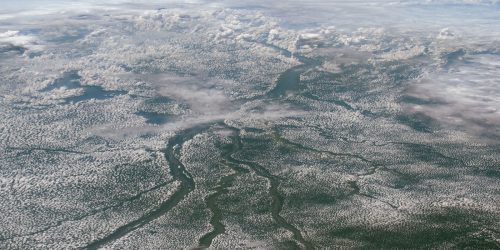A new study supported by the Climate Program Office’s Climate Variability & Predictability (CVP) Program explores the transformation tropical cyclones undergo as they move away from the equator. The Florida State University research team that developed these results included CVP-funded scientist Rhys Parfitt, PhD candidate Evan Jones, and researcher Allison Wing. This work builds on a joint CVP initiative in partnership with NOAA’s National Weather Service – Office of Science and Technology (OSTI) Modeling Division to improve the understanding of precipitation processes and representation in weather and climate models.
As tropical cyclones move toward the planet’s poles, they encounter cooler sea temperatures and different atmospheric conditions, and the storm systems react by spreading out, cooling down, and forming distinct warm or cold weather fronts at the boundaries. Research has yet to fully characterize this front development, but this study analyzes how the weather fronts evolve with sea surface temperatures in regions like the North Atlantic and West Pacific Oceans. The results, published in the Quarterly Journal of the Royal Meteorological Society, show that the way a storm’s structure changes influences the intensity of these weather fronts and changes in sea surface temperature. The authors also show that tropical cyclones with pre-existing fronts will go through this transformation more quickly. This extensive investigation gives us a clearer picture of how tropical cyclones evolve and influence specific weather patterns like strong winds and storm surges that can impact coastal communities around the world.
For more information, contact Clara Deck.
Image credit: NASA










